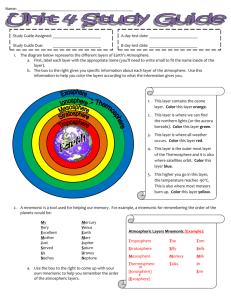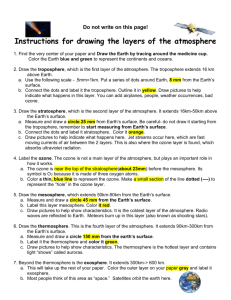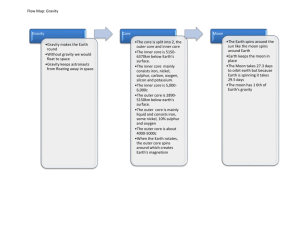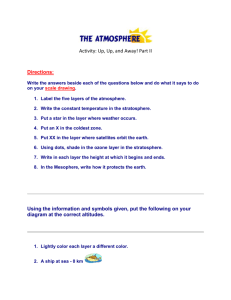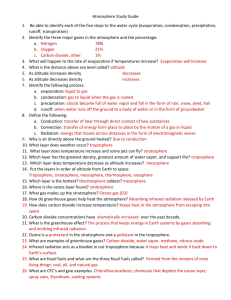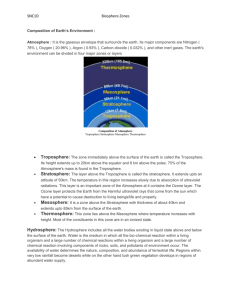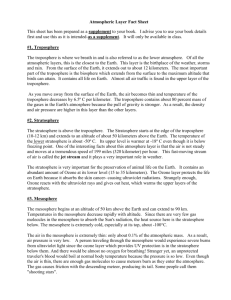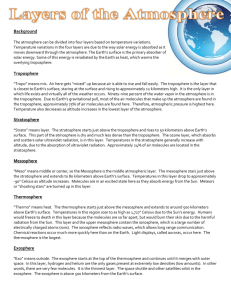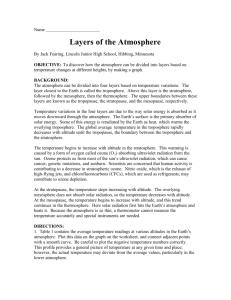1.2 Questions - Bennatti
advertisement
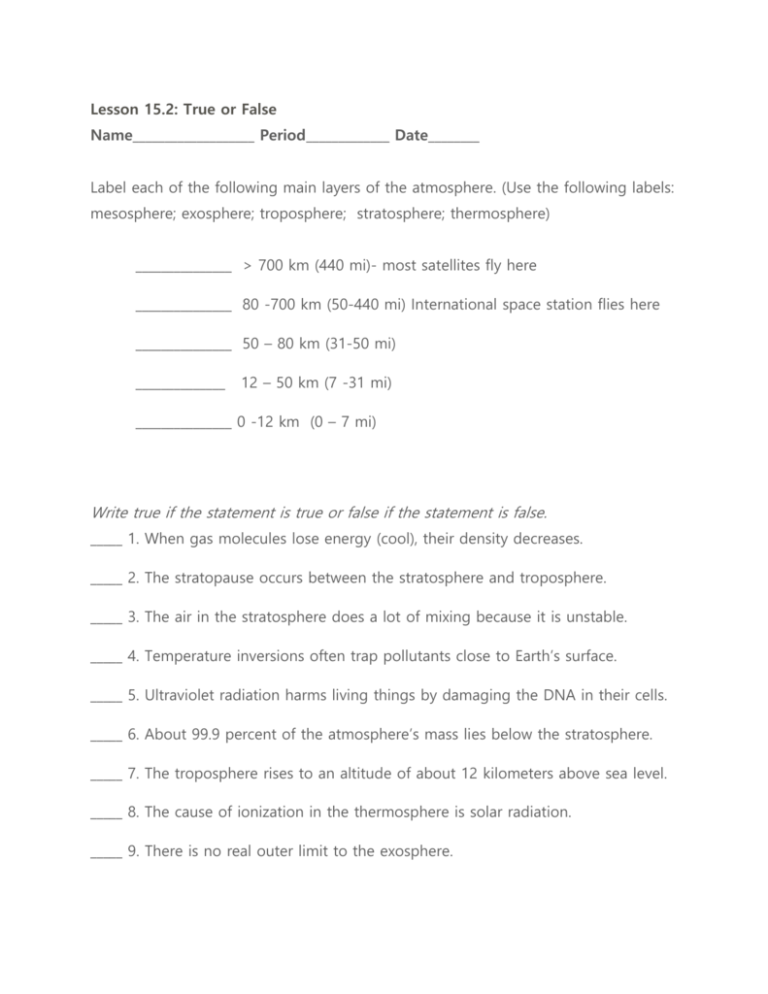
Lesson 15.2: True or False Name___________________ Period_____________ Date________ Label each of the following main layers of the atmosphere. (Use the following labels: mesosphere; exosphere; troposphere; stratosphere; thermosphere) _______________ > 700 km (440 mi)- most satellites fly here _______________ 80 -700 km (50-440 mi) International space station flies here _______________ 50 – 80 km (31-50 mi) ______________ 12 – 50 km (7 -31 mi) _______________ 0 -12 km (0 – 7 mi) Write true if the statement is true or false if the statement is false. _____ 1. When gas molecules lose energy (cool), their density decreases. _____ 2. The stratopause occurs between the stratosphere and troposphere. _____ 3. The air in the stratosphere does a lot of mixing because it is unstable. _____ 4. Temperature inversions often trap pollutants close to Earth’s surface. _____ 5. Ultraviolet radiation harms living things by damaging the DNA in their cells. _____ 6. About 99.9 percent of the atmosphere’s mass lies below the stratosphere. _____ 7. The troposphere rises to an altitude of about 12 kilometers above sea level. _____ 8. The cause of ionization in the thermosphere is solar radiation. _____ 9. There is no real outer limit to the exosphere. Circle the letter of the correct choice. 1. A change in temperature with distance is called a temperature: a. gradient; b. inversion; c. reversal; d. none of the above 2. The major direct source of heat in the troposphere is: a. the greenhouse effect; d. UV rays; b. heat from the Earth’s surface; c. the solar wind; e. ozone 3. In a temperature inversion, warmer air: a. sits over cooler air; cooler air; b. rises into the stratosphere; c. is less stable than d. sinks to the Earth’s surface 4. The thickness of the ozone layer in the atmosphere varies by: a. Season; b. latitude; c. longitude; d. a and b; b. a and c 5. Most meteors burn up in the: a. Mesosphere; b. troposphere; c. stratosphere; d. thermosphere 6. Temperatures increase with increasing altitude in the: a. Troposphere; b. mesosphere; c. stratosphere; d. a and b; e. b and c Match each definition with the correct term. Definitions _____ 1. layer of the atmosphere where the International Space Station orbits _____ 2. lowest layer of the atmosphere _____ 3. outermost layer of the atmosphere _____ 4. layer of the atmosphere that contains the ozone layer _____ 6. layer of the atmosphere with the coldest temperatures _____ 7. zone of charged particles that cause the aurora Terms a. exosphere b. ionosphere c. mesosphere d. stratosphere e. thermosphere f. troposphere Fill in the blank with the appropriate term. 1. The atmosphere is divided into layers based on the way that __________ changes with altitude. 2. The density of air is higher when air temperature is __________. 3. Temperatures in the troposphere __________ with higher altitude. 4. The direct source of heat for the stratosphere is the __________. 5. Temperatures in the mesosphere __________ with higher altitude. 6. At night, AM radio waves bounce off particles in the __________. 7. High-speed particles traveling outward from the sun make up solar __________.


